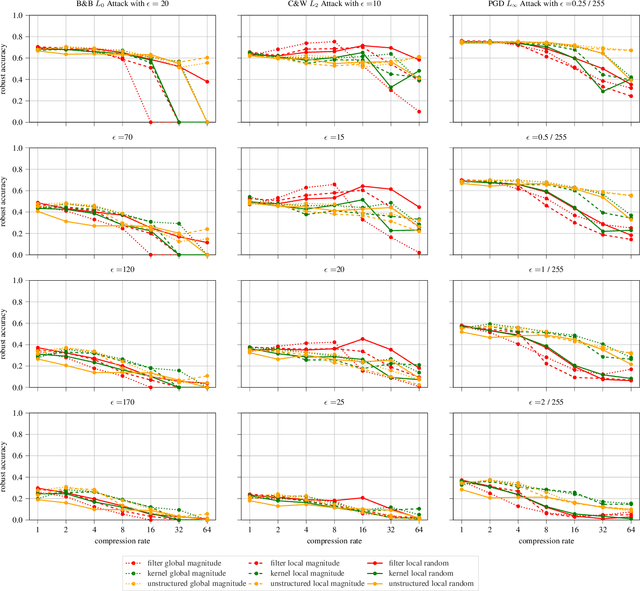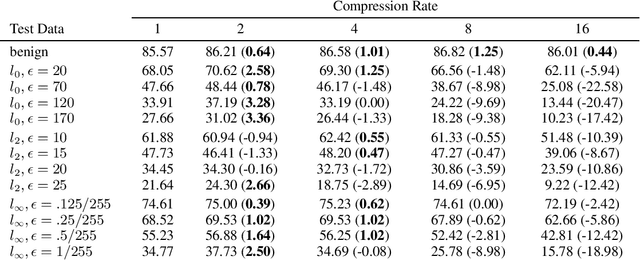Pruning in the Face of Adversaries
Paper and Code
Aug 19, 2021


The vulnerability of deep neural networks against adversarial examples - inputs with small imperceptible perturbations - has gained a lot of attention in the research community recently. Simultaneously, the number of parameters of state-of-the-art deep learning models has been growing massively, with implications on the memory and computational resources required to train and deploy such models. One approach to control the size of neural networks is retrospectively reducing the number of parameters, so-called neural network pruning. Available research on the impact of neural network pruning on the adversarial robustness is fragmentary and often does not adhere to established principles of robustness evaluation. We close this gap by evaluating the robustness of pruned models against L-0, L-2 and L-infinity attacks for a wide range of attack strengths, several architectures, data sets, pruning methods, and compression rates. Our results confirm that neural network pruning and adversarial robustness are not mutually exclusive. Instead, sweet spots can be found that are favorable in terms of model size and adversarial robustness. Furthermore, we extend our analysis to situations that incorporate additional assumptions on the adversarial scenario and show that depending on the situation, different strategies are optimal.
 Add to Chrome
Add to Chrome Add to Firefox
Add to Firefox Add to Edge
Add to Edge